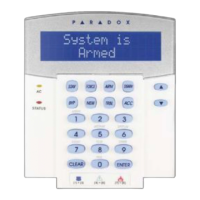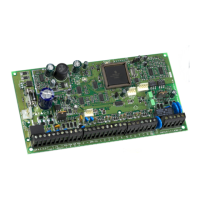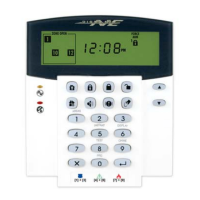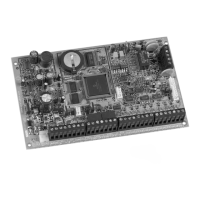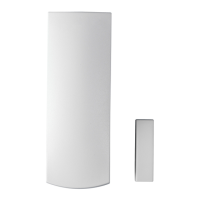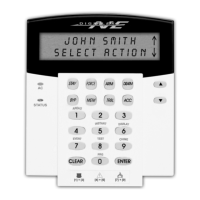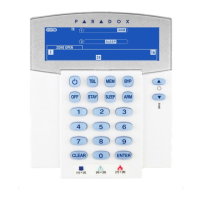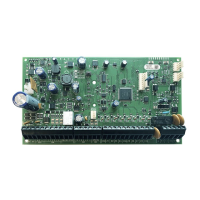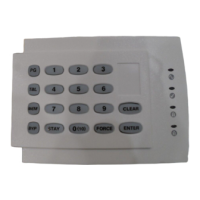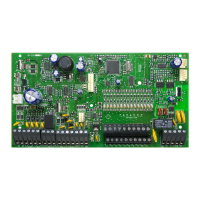
Do you have a question about the Paradox Digiplex EVO EVO48 and is the answer not in the manual?
| Brand | Paradox |
|---|---|
| Model | Digiplex EVO EVO48 |
| Category | Security System |
| Language | English |
Explains symbols and icons used in the manual for clear understanding.
Illustrates the layout and function of the LCD keypad for system interaction.
Illustrates the layout and function of the LED keypad for system status.
Details confirmation and rejection beep tones for user feedback.
Describes programming keypads to hide system status information.
Details visual and auditory feedback for arming and disarming states.
Describes feedback for other system events like PGM status.
Explains how to view the status of individual system areas.
Allows time to exit the premises after arming the system.
Standard method for arming the system when all zones are closed.
Partial arming to secure perimeter while occupants remain inside.
Arming without entry delay for immediate zone protection.
Arms the system even with open zones, securing them once closed.
Temporarily ignores specific zones when arming the system.
Restores zones that were bypassed during the last arming period.
Provides quick access to system functions via dedicated buttons.
Method for arming/disarming the system using a physical keyswitch.
Automatically arms the system at a programmed time or based on movement.
Allows time to enter premises and disarm before alarm activation.
Step-by-step guide to disarm an armed security system.
Shows a history of alarms that have occurred in the system.
The highest-level code for full system programming and control.
Efficiently duplicates settings from one user code to another.
Personalizes user access codes with custom names for identification.
Guides on using numeric keys to input characters for user labels.
Explains the role of special keys in label programming.
Procedure for removing existing user access codes from the system.
Steps for creating and configuring new user access codes.
Detailed configuration steps for user access codes and options.
Defines various user-specific system features and permissions.
Configures specific features for access control doors and card readers.
Methods for using cards or codes to access controlled doors.
Using access cards to arm or disarm the system.
Procedure to arm the system using an access control card.
Procedure to disarm the system using an access control card.
Illustrates system logic with examples of access grant/denial.
Explains how to access and interpret system trouble notifications.
Lists and describes various system trouble conditions and their causes.
Allows viewing a log of user-initiated actions and system events.
Details on customizing system outputs for various events.
Adjusts display brightness, contrast, and sound settings.
Procedure for updating the system's internal clock and date.
Configures specific zones to chime upon opening.
Explains how to activate emergency alarms via button combinations.
Describes using predefined button sequences for specific actions.
Instructions for remotely accessing the voice dialer for system control.
Explains how the system handles incoming calls from the voice dialer.
Guidelines for testing burglar and fire alarm system functionality.
Recommendations for regular upkeep, including battery replacement.
Procedure for conducting a comprehensive system diagnostic test.
Describes operation of standard fire detection zones and alarm response.
Explains fire zones with an automatic delay before contacting monitoring.
Provides advice on fire prevention and escape planning.
Offers advice on avoiding common causes of household fires.
Guidance on installing smoke detectors for effective fire detection.
Details system feedback and actions during a burglar alarm event.
